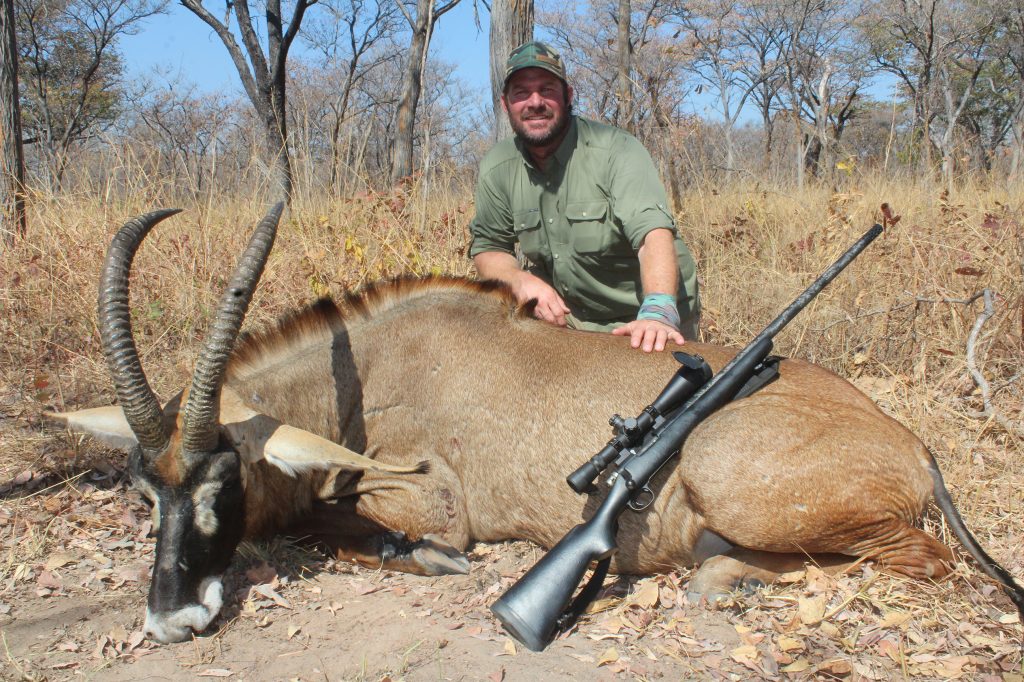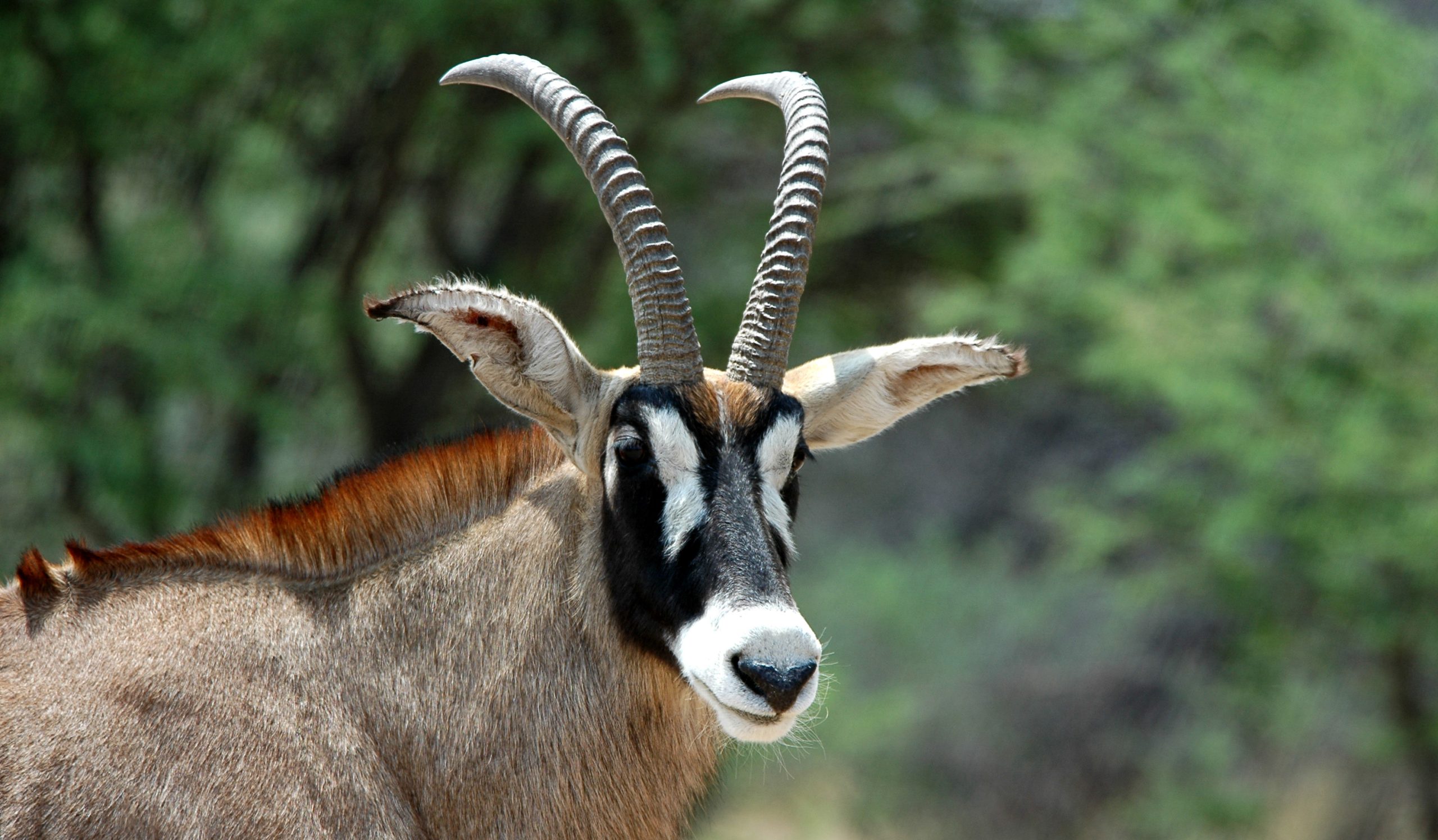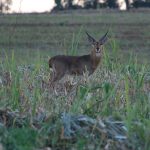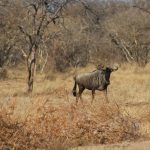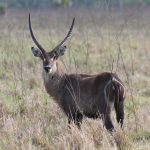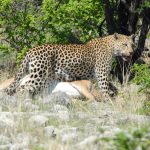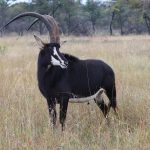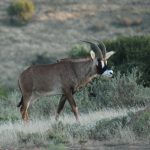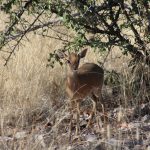Africa’s second-largest antelope often takes hunters by surprise.
Photo above: Horn and body shape and face mask confirm that the roan and sable are closely related, but the roan is much larger, with shorter, thicker horns and longer ears. (Photo by Dirk de Bod)
Recently, in another publication, I noticed a photo with a caption that misidentified a roan antelope as a sable. Hey, I’m sure the writer knew what he shot, and the editor knows the difference. We all have mental malfunctions! Roan and sable antelopes are cousins of genus Hippotragus, with similar body build, white face mask, and heavily ringed curving horns carried by both sexes. Ideal country doesn’t vary a lot, mixed habitat with both savanna and woodland.
That’s pretty much where the similarities end, however. The light-colored roan is not as strikingly beautiful as the glossy black sable bull, but he is larger in body, with shorter, thicker horns and longer ears. He is also the more difficult pursuit. Roan antelope gather in smaller groups, and are somewhat more likely to be found in heavier cover. The roan has a larger range, almost throughout sub-Saharan Africa, excepting only the heart of the forest, deepest swamps, and tallest mountains. They are nomadic, and plentiful almost nowhere.
Game ranchers in Namibia and South Africa have done a good job of breeding both sable and roan, making both species more affordable and available. In wild Africa, a good roan is a hard-won prize. They seem more sensitive to man’s intrusion than sable, or perhaps just not as prolific, with fewer hunting opportunities. I have seen roan in Botswana, Mozambique, and Zimbabwe, but in all three countries they have been protected throughout my career. Native and free-range roan are currently on license in northern Namibia, Zambia, and Tanzania, as well as in C.A.R., Cameroon, Benin, and Burkina Faso.
The sable antelope is divided into three more or less distinct races: The giant sable (bigger horns and different facial markings), with a postage-stamp range in Angola, and the smaller, slightly reddish Roosevelt sable along the Indian Ocean coast from northern Mozambique to Kenya. All the rest are “common sable.” With roan, the “lumpers” held sway, identifying several regional groupings that, to my eye, are indistinguishable. I am unlikely to ever see an Angolan or Sudan roan! Most widespread, and today most numerous, is the southern roan. The East African roan is currently hunted only in Tanzania. Largest is the western race, which possibly earns the roan its oft-cited title as “Africa’s second-largest antelope.” Rowland Ward’s minimums vary but little: 26 inches for the Angolan race; 26.5 inches for East African and southern; and 27 inches for Sudan and western roan.
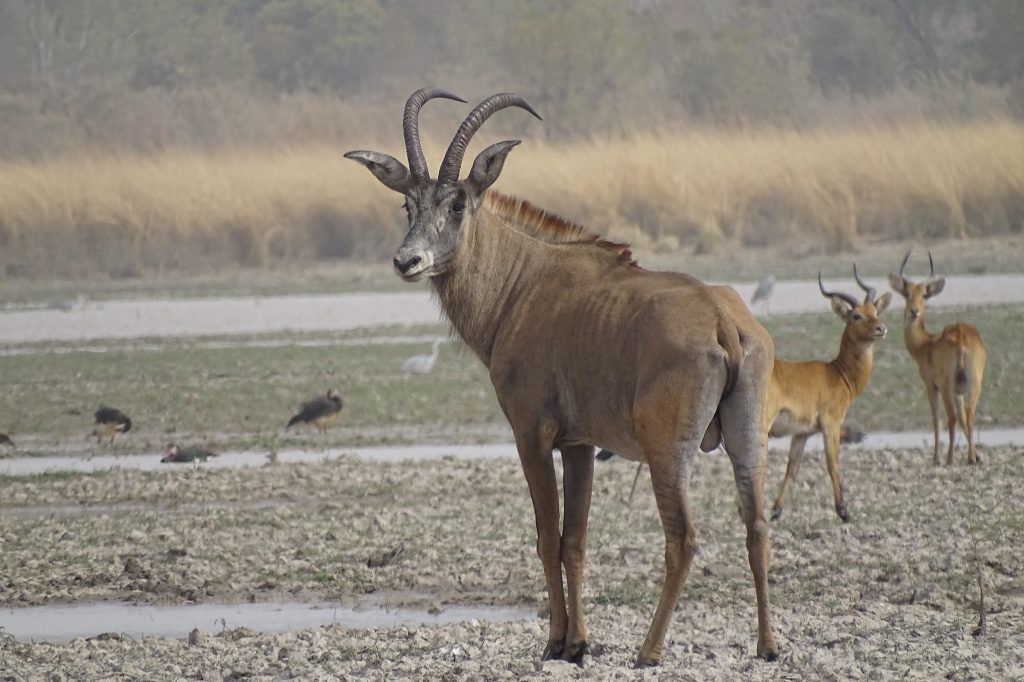
The western roan occupies a huge range, from C.A.R. all the way to Senegal, but is usually not common. We saw tracks in southern Chad and also on my first bongo safari in C.A.R., down in the southeast corner, far from typical habitat. In four safaris to C.A.R. I never saw a decent roan, although that country is one of the good places. I finally got a western roan in northern Cameroon in 2004. Hunting in the Mayo Oldiri and adjoining Mayo Nduell blocks, we saw shootable roan bulls almost every day. PH Guav Johnson kept telling me to pass. Reluctantly, I did, and was rewarded with a whopper.
I was there again in 2008 and saw several good bulls without hunting for roan. So, northern Cameroon is a good place, and almost the best place I’ve seen. In 2014, Donna and I hunted in Burkina Faso. There, the roan is the most common large antelope. Multiple daily sightings were normal, and Donna got a fine bull. Sadly, hunting in Burkina Faso was shut down by terrorist activity. Hopefully it will reopen, but I understand Benin, just to the south, is as good for roan.
In Burkina Faso they try to recover animals whole, recording weights and measurements. So, I know for a fact that Donna’s roan weighed 653 pounds. A big greater kudu bull can weigh more, as can a big bongo. The roan’s title as Africa’s second-largest antelope is thus disputable. Hers was a prime bull with good horns, but I’ve seen roan bulls that I judged heavier by at least a hundred pounds. For sure, though, the roan is one of the largest antelopes!
In Tanzania, roan don’t occur in most Masailand blocks, nor in Selous. Western Tanzania is good but they’re thinly dispersed. Hunting with Geoff Broom on the upper Ugalla in 1993, we saw tracks, but no roan. In 2010, I spent three weeks in Rungwa, also very good for roan. We weren’t after roan, but we never saw a single one. Hunting with Jaco Oosthuizen in Kigosi, east of Moyowasi, an East African roan was my primary goal. On about the tenth day, we found a small herd with a big bull, almost got him that evening but it got too dark. We found them again the next morning, finally getting a shot in the early afternoon.
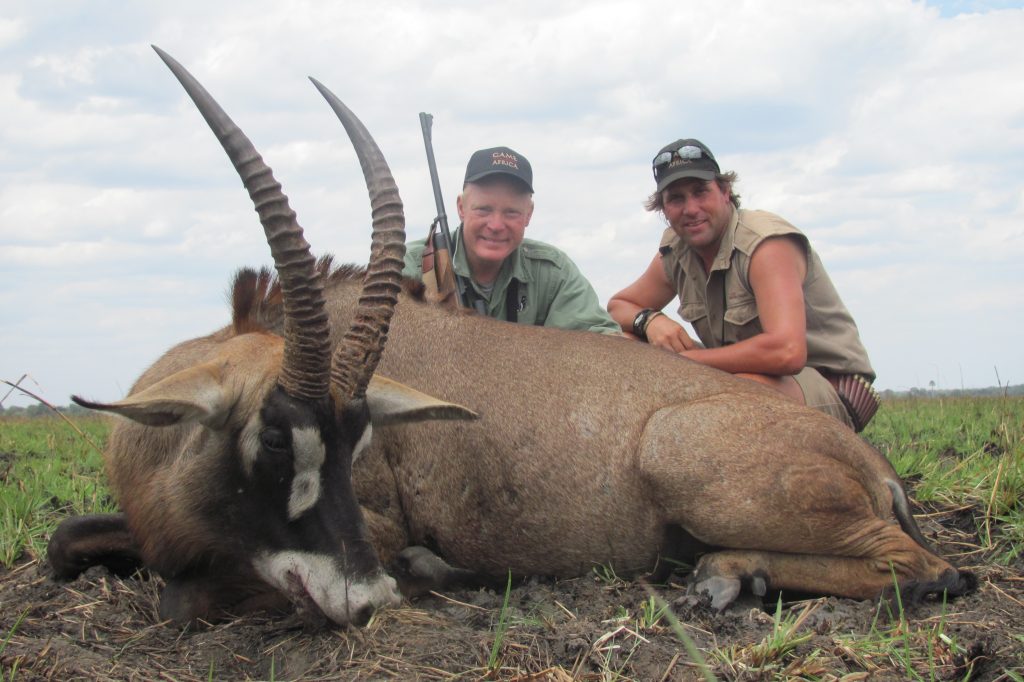
In the right place, Zambia is excellent for roan, and over the years Zambia has been good to me. On my first hunt there in 1983, we bumped into a small herd in hilly country above the Luangwa Valley. It wasn’t a great bull, but for many years it was my only roan. As I approached it, I’ll never forget old Bill Illingsworth’s shouted warning: “Stay away from that thing!” I’ve never forgotten: Roan are fierce antelopes, and they know how to use those needle-sharp horns.
In 1996, hunting the Mulobezi block off to the west near Kafue Park, we saw no roan until nearly the end. PH Russ Broom insisted the conditions were right and they should be moving in. He was correct; on the next to last day, we hunted a grassy area up in the northern corner. Sure enough, I got a nice bull . . . barely. The shot was quick, but wasn’t as good as it looked. A poor blood trail took us through tall grass. We weren’t certain we were still on the spoor when the bull jumped up in front of us and streaked away. I got him down. Next morning, with a charter due, the rest of us packed up while Bob Petersen went out for one last try for a roan. They came back at noon with a beautiful roan, taken with a very long shot with his .300 Jarrett.
Sable antelope are difficult to see in shadows, but their dark, shiny coats stand out like beacons in open country. Roan antelope vary in color from light sand to brown to rufous or “strawberry roan.” To my eye, they are much better camouflaged under all circumstances, and more difficult to spot. For sure, I find it more difficult to pick out a bull. With sable, only mature bulls are really black; cows and young bulls are lighter. With roan, bulls and mature females are pretty much the same color. With both species, you must look for the larger-bodied males. As with most antelopes where both sexes have similar horns, you must look for the bull’s thicker horns. This seems more subtle with roan, but that could be because I haven’t seen nearly as many of them.
With sable, the magic number is 40 inches of horn; with roan, drop 10 inches. A 30-inch roan is the Holy Grail, but it’s a rare prize. As mentioned, Rowland Ward’s minimums are much less than the 30-inch mark, while the sable minimum is 42 inches. Shootable and acceptable roans probably start in the mid-twenties, given good mass and the gnarled “secondary growth” of an old bull at the bases.
It’s difficult to hunt roan on purpose. Especially where they’re relatively uncommon (which is most places), they can pop up anywhere. With knowledge of an area and past sightings, you have some idea where to look first, but a roan can still be anywhere. In my experience, it’s likely to be a mature bull walking alone, suddenly spotted, and someone hisses, “It’s a roan!”
Zambia’s northernmost Luangwa block, Chikwa, is known to produce exceptional roan. When I was there with son-in-law Brad Jannenga in July 2021, PH Davon Goldstone insisted we would get a roan, and he knew of some grassy openings to the north where several herds roamed. We never quite got there because we didn’t need to. Checking baits and looking for buffalo, we saw exactly three roan antelope in three weeks, all solitary bulls. One was young, two were exceptional. We shot the first good one we saw, on a hot midday in thick woodland in the middle of nowhere. Davon hissed “It’s a roan,” and in seconds was setting up sticks. Brad’s bull is the largest southern roan I have ever seen, 30 inches on both horns, massive bases with amazing secondary growth, tips starting to wear. Also, it’s one of the biggest-bodied bulls I’ve seen, heavy enough to suggest that the roan may, in fact, be Africa’s second-largest antelope.
